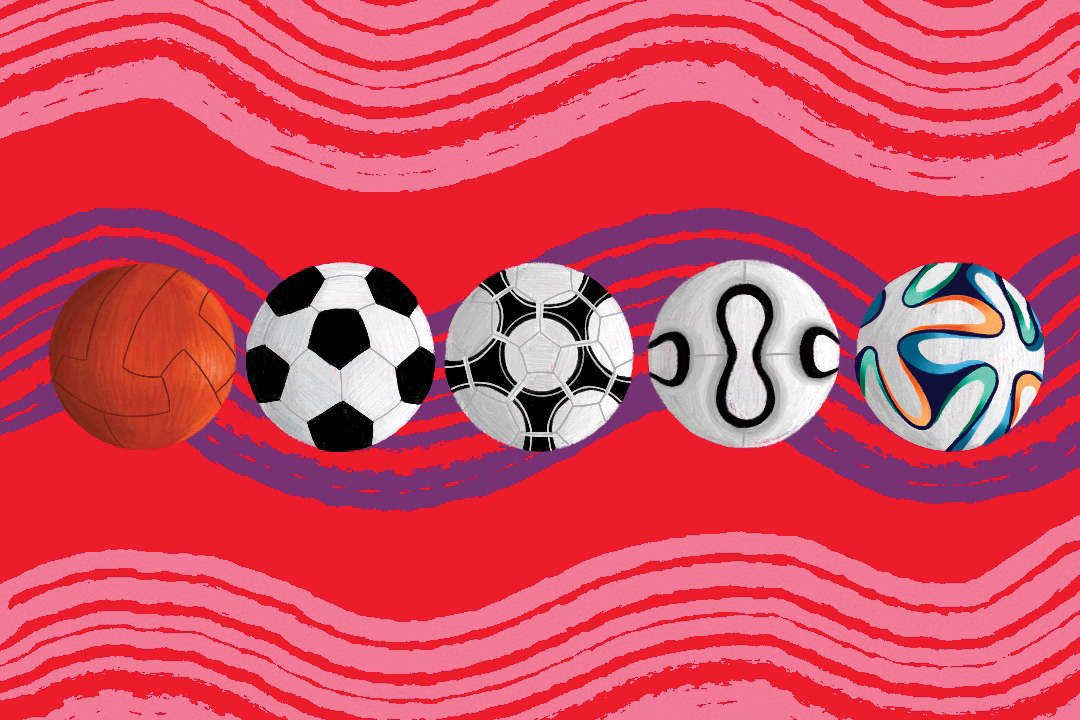It’s a human instinct: we see something round and we immediately feel like kicking it. It’s so well ingrained within us that we’ve gone and made a game of it that goes by the name of football. Or soccer, if you’re uncultured like I am — but I digress.
The early history of soccer
Games involving two or more people kicking some round object back and forth likely date back to the very beginning of human history, and there is evidence of organized soccer-like games that were played in ancient Greece and China more than 2,000 years ago. Kicking games were also played by Indigenous peoples in North America and possibly across the Roman Empire, and ‘folk football’ was popular in renaissance Europe, often with teams from different villages competing against one another.
The English are credited with the invention of the sport in its modern form. In the mid-1800s, soccer became popularized as a winter sport at elite schools and universities across England. As the sport increased in ubiquity, it soon became necessary to implement universal regulations. In 1863, representatives from teams around London met and produced the first set of written rules of the game.
The remainder of the nineteenth century saw the establishment of professional clubs and leagues. The first games of the Football League of England — the oldest league in the world — were played in 1888. The year 1904 saw the formation of FIFA — the Fédération Internationale de Football Association — which serves as the international governing body of the sport. Soccer was made a part of the Olympics four years later and has been played in all but one of the Summer Games since. With the turn of the century, the age of soccer was well and truly underway.
Developments in the twentieth century
In the century that followed, soccer quickly became one of the most popular and beloved sports in many nations around the world. Many of the prestigious international tournaments we still enjoy today, including the World Cup, European Championship, and Copa America, were all established during the first half of the twentieth century. Several national leagues and club competitions, including the UEFA Champions League, were also founded during this time.
Soccer became a profoundly important part of life for billions of people, with impacts reaching far beyond that of simply sport. One incredible story comes in the form of a Christmas Day truce between English and German soldiers during World War I, when they exchanged small gifts and played a game of football on the field between their trenches in an illuminating moment of hope and humanity during an otherwise brutal and senseless conflict.
The ubiquity of soccer also meant that it has had a great influence on cultural identity in many countries around the world. One prominent example is when the Brazilian team lost the 1950 World Cup final on home soil, which became a source of national shame for decades to come. Meanwhile, the West German team’s unlikely tournament win in Switzerland four years later — dubbed the “Miracle of Bern” — restored some measure of hope for the general public, who were still deeply affected by the war.
In the second half of the twentieth century, soccer further cemented its status as the world’s favourite sport, seeing a massive rise in popularity in Africa, Asia, Oceania, and North America. The age of television and globalization meant that it had become easier than ever to become a fan of the sport. What was once a village game and then a gentlemen’s hobby had now become a global institution worth billions in marketing, sponsorships, and media deals.
Soccer in the modern world
In today’s world, soccer remains as popular as ever; there are an estimated 250 million soccer players around the world, with over a billion interested in the sport. Official broadcast numbers indicate that the finals of the World Cup and Champions League draw in more than a seventh of the world’s population, although actual viewership is likely to be even higher.
However, despite its enduring status worldwide, modern-day soccer draws in its fair share of critics, and not without reason. Many are disillusioned with the increasingly important roles that sponsors and money play in the sport, bemoaning the fact that success now seems to be for sale and that more and more clubs are sacrificing their identities and ties to the local community for a chance at silverware. The widely available media coverage of soccer — both on television and on social networks — has made it easier than ever for fans around the world to connect with the sport they love, but it has also brought forth an era of unprecedented personal hatred and vitriol directed toward the players fans claim to support no matter what.
I agree that it can be easy to get caught up in the negatives of what we’ve lost in the game we all love, but we should remind ourselves of why we loved it in the first place. Whether you’re one of the lucky ones who gets to watch your favourite team live in the stadium, soaking up the atmosphere with your fellow fans, or you’re cheering on the sidelines at an elementary school game, watching the kids you coached grow up with every save, tackle, and goal, you are part of a tradition as old as humanity itself — doing something you love, together with other people who are doing the exact same thing. We love this game because it brings us together just as it always has, and that is something that will never change.


